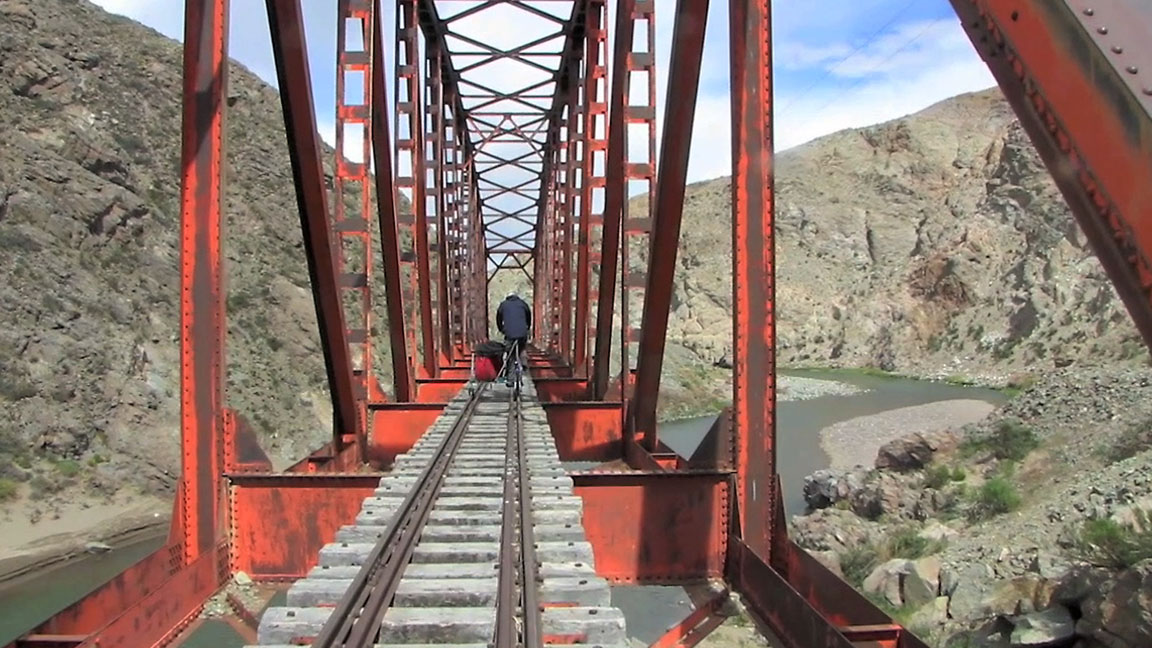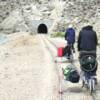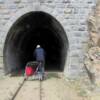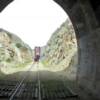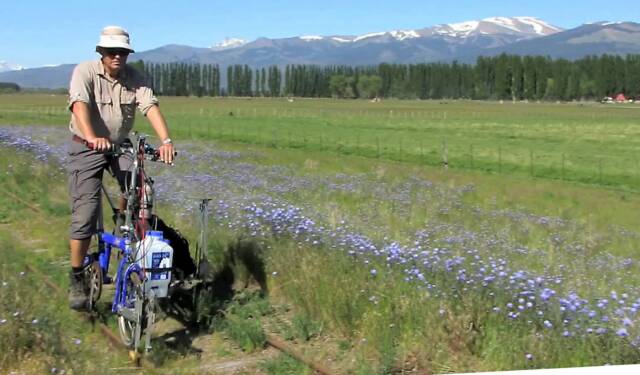Peter in Patagonia
Part VI: Synopses Conclusion
Railbiking La Trochita
La Trochita is one of the longest surviving narrow gauge railroads in the world. Two hundred and fifty miles through some of the most desolate country in South America with a striking backdrop of the Andes. With their management supportive of our railbiking, it was an opportunity for an adventure of a lifetime.
Although the country we rode through was mostly barren, similar to many sections of the American west,
the unobstructed views and the vastness of uninhabited space was awesome. La Trochihta does not have
many spectacular features such as we are accustomed to in the Pacific Northwest. There were no
towering spindly trestles, only one tunnel, and a few small bridges.
.
An Adventure of a Lifetime
Those bridges however, were some of the most nerve shattering experiences I have encountered
railbiking, simply because there was very little between you and the rushing rivers below. If your bike
derailed, or the wind caused you to overbalance, the result would be a disastrous fall. There is much truth in Roosevelt's statement, "We have nothing to fear but fear itself," and psychologically, these bridges were killers.
Crossing the bridge at Rio Chico. The wind through the canyon brought nerve racking moments.
Click on the photos above for the tunnel and bridge sequence at Rio Chico
We arrived in Patagonia on the first of December. This is the equivalent to the first of June in the
northern hemisphere. There had been quite a bit of rain during November, and there areas of lush green fields and wildflowers along the tracks.
As our route headed away from the Andes into the great plains it became evident that in the months ahead the country would be hot, dry and inhospitable. The skeletons of large and small animals were everywhere. Sun parched bones were scattered through the sage like driftwood on storm drenched beach. Cattle, horses, sheep, rabbits, birds, they all told the story of a hot, waterless environment.
Perhaps the most unexpected and appalling condition in Patagonia were the tens of thousands,
more likely millions, of discarded plastic bags. They are carried by the strong winds into the most desolate and otherwise pristine areas, where they are caught in bushes, snagged by trees, or fluttering from wires and telephone poles. The smaller communities seem not to have any waste disposal sites, and even some of the larger cities simply dump their waste, uncovered, on top the ground. On our way home we took a train across Patagonia to Viedma, a lovely city on the Rio Negro. As we approached the city we began to notice more and more plastic bags in the countryside. Mile after mile they became more heavily concentrated until the entire landscape looked like it was covered with snow. As the train passed by the city dump the reason was obvious. The wind would carry them throughout Patagonia. If you don't believe plastic bags are detrimental to the environment, a trip to Argentina will change your mind.

